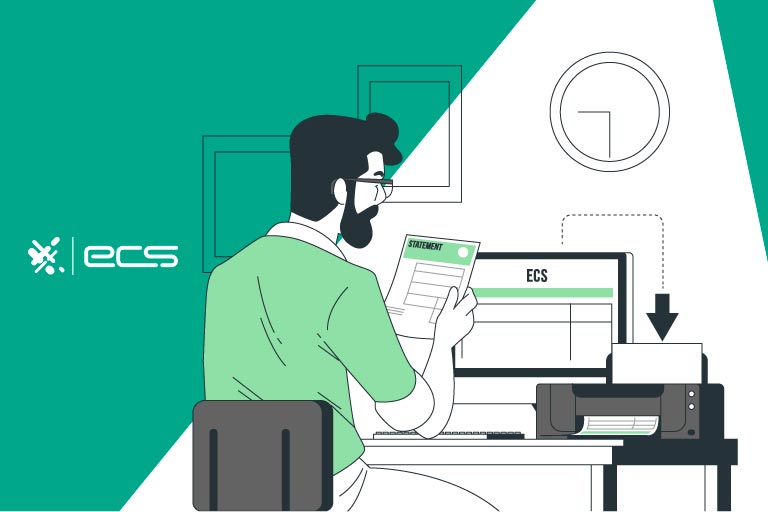So you’ve decided it’s time to look into switching merchant accounts with a new merchant provider. Maybe you don’t like the transaction fees your other credit card processing company charges. Maybe your payment processor has bad customer service. Or maybe you’re switching merchant services because the hardware keeps breaking down. Whatever the case may be, you don’t want to make the same mistake when looking for a new payment processor. We’re here to help.
How Many Payment Processors Are There?
According to Visa, there are 1,300 independent debit and credit card processors around the world. Imagine trying to find a needle in a haystack like that. Of course, payment processing companies with a home base (or significant footprint) in English-speaking countries will be your go-to. But even with the playing field narrowed down, you will still have hundreds of credit card processor companies to choose from.
Such a vast free market of choices means you will have a lot of options out there. There are global behemoths like PayPal, Square, and Stripe. Then there are loads of independent fintech companies.
Since local banks are already merchant account providers, some business owners turn to them for accepting payments. And recently, analytic companies like J.D. Power have noted that big banks have also entered the payment gateway competition.

Switching Merchant Accounts Due to Problems With Common Processing Fee Structures
First, let’s touch upon the fees by using the largest payment processor companies as an example. PayPal, Venmo, Stripe, and Square generally charge flat rates to process credit card transactions. Many business owners just starting out turn to these virtual terminal operators because they are well-known and easy to set up. The flat rates for accepting credit card payments take away a lot of headaches and confusion.
Everything seems good, until it doesn’t.
The truth of the matter is that every transaction does not cost 2.5% to run. Some cost more, but most actually cost less. Visa, Mastercard, American Express, and Discover all have different interchange fees.
These fees help them cover the cost of facilitating transactions and making a profit. But wait…there’s more. There are also separate networks for debit transactions which cost significantly less than credit card transactions.
Then there are different ways for customers to offer their cards. The magnetic strip swipe will be going the way of the Macarena by 2033, so we’ll leave that one to your local throwback jams station. EMV chips, contactless taps, credit, PIN debit, and PIN-less debit… are all different modalities for in-person payment, also called card-present.
Then, there are card-not-present (CNP) transactions, such as anything online (including a payment portal arrived at with the help of a QR codes).
All of these methods have different fees.
So paying a flat-rate, may be cutting into your profit more than you realize.
There is More Than Meets The Eye to Flat Rate Pricing
But many transactions could be costing you much less than a flat rate fee. This is especially true for brick-and-mortar businesses because there are more varieties of card-present transactions. And this is why you won’t see very many PayPal POS systems: it just doesn’t make sense.
Flat-rate pricing works well for companies with a low sales volume, such as someone selling homemade scented candles made from old crayons on Shopify. But once Instagram celebrities start using those candles in Bohemian wedding photoshoots, and said candlemaker starts getting a thousand orders a day, PayPal pricing will not work. In fact, because of flat-rate pricing, such a merchant could be leaving thousands of dollars on the table every year.
If your payment processor only offers flat rate pricing, and your business has grown into a normal sales volume for your industry, it’s time to grow beyond a cookie-cutter solution. In looking for a new merchant account credit card processing company, look for one that does not charge flat rates.
What About Tiered Pricing
Some merchant services credit card processors provide tiered pricing. This may seem like a good alternative to flat rate pricing and its lack of nuance. However, tiered pricing still does not hit the mark…for different reasons.
With tiered pricing, there are different fees. Usually, there are three categories, based on card and transaction type: qualified, mid-qualified, and non-qualified.
Qualified transactions usually include debit cards and non-reward credit cards. Mid-qualified transactions usually include rewards credit cards. And non-qualified transactions usually include corporate cards, international cards, and card-no-present transactions.
Tiered pricing is set up to protect the payment processor from risky transactions. For instance, card-not-present and international credit card transactions are more likely to be fraudulent. The increased pricing of these transactions helps the payment processor decrease the cost of fraudulent transactions when they do occur.
What Type of Pricing Should You Look For?
For most business owners, the best type of pricing is interchange plus pricing. In this pricing model, each transaction has fees that accurately reflect the actual cost of running it. There is also some markup for the payment processor. The end result is a variety of fees based on card type and transaction method.
This means that when a customer pays with a Visa debit card, you (the merchant) won’t end up paying the same fee as you would to run a platinum American Express credit card.
Your payment processor should also be able to offer you fees based on sales volume. Flat fees that don’t take volume into account are a big drawback of companies like PayPal, Stripe, and Square. And that’s a big reason why companies who expand behind the infant stage really must get away from big behemoth processors.
As your sales volume grows, you are helping your payment processor make more money. In return, they should be able to help you out by giving you a discount as your sales volume increases.
In looking for a new credit card merchant processing service, look for one that offers transparency in its pricing (like interchange plus) and can be flexible about its pricing model (such as negotiating fees based on volume).
Switch Merchant Accounts with Simple Integration
When looking to switch payment providers, another thing you should consider is integrations. Integrations connect one type of software with another, eliminating the manual process of carrying information from one platform to another.
For instance, without software integrations, a merchant would have to perform several processes to get their proverbial ducks lined up in a row. They’d have to manually translate sales info from the register to their accounting books and to tallies of inventory. This multi-step process would take up a lot of their time, employee manpower, or financial resources to outsource it all.
But with software integrations, your POS can be linked up to something like Quickbooks, along with inventory management software. No more time spent taking data from one place and moving it to another by hand, or even by typing numbers into spreadsheets.
Today’s payment landscape is populated by many fintech solutions that integrate and automate all aspects of a business. If your current payment processor wants to retain their business, they’ll stay up to date on the latest integrations and offer them to their customers (business owners like you).
If, on the other hand, your payment processor does not offer these integrations, and you are looking for a new payment processor, you should make sure they do. These integrations can produce productivity, lower expenses, and give you more free time.
Integrations and AI
Another thing integrations can do is assist with AI or machine learning. These technologies can help you brainstorm ways to improve your business by leveraging a collection of so-called “big data.” This is data from customer behaviors, gleaned from the POS.
What items do customers typically purchase together? What are your busiest days of the week? What are your hottest-selling items? You can use questions like this to create a focused sales and marketing strategy. You can build off of trends or brainstorm ideas to fill in the gaps.
For instance, store displays, emailed coupons, and product promotions are a few ways to respond to the data provided by your POS. And all of that is only possible if your new merchant services provider can integrate.
Switch to a Merchant Account With Up-to-Date, Responsively-Serviced Hardware
What kind of equipment is your new (potential) payment processor working with? The hardware of the payment landscape has evolved a lot over the last few decades. Originally, hardware facing American consumers only had magnetic strip readers. Then they had EMV chip readers. Now they have contactless card readers.
Ultimately, magnetic strip readers will soon disappear entirely. And biometric readers (facial scans, retinal scans) may soon be commonplace.
This rapidly evolving landscape means the hardware is its own consideration. You do not want to deal with a payment processor that sells you equipment that will soon be defunct. Make sure they have some flexibility in terms of selling, renting, or leasing the hardware you need.
The Importance of Customer Service When Switching Merchant Accounts
You will also want to make sure your payment processor can service the POS systems and any other hardware they sell you. Companies like Square and Stripe, which lease equipment, have notoriously bad customer service. You do not want to be stuck on the phone with the sultry sounds of Kenny G on saxophone while a line of angry customers starts piling up in front of you.
Customer service is much more important than you think. Generally, payment processing is an automated process…until it isn’t. There will be hiccups with any software or hardware. A payment processor might provide you with a dedicated account manager who can be the link between you and the resolution of an issue.
See what type of customer care arrangement a new payment processor offers. The best arrangement is a dedicated point-person who picks up the phone or answers their email.
Switch to a Merchant Account With Up-To-Date Fraud Measures
You will want to make sure your new payment processor is up to date on fraud measures. It was popular for criminals to use magnetic strip skimmers to collect credit card information and replicate fake cards. With the advent of contactless technology, some of this fraud has disappeared.
But where there is a will, there is a way, and criminals are constantly cooking up new ways to steal credit card information. It goes without saying that online payment methods are very susceptible to fraud. Your payment processor should be using the latest technology to work with banks and card networks to prevent fraudulent purchases.
Can You Still Provide Loyalty Programs When Switching Merchant Accounts
In a world of choices, loyalty programs are key for reducing customer churn and increasing sales. Research has shown that loyalty programs can boost revenue by as much as 25%. Some small business owners use a low-fi approach to loyalty, like a punch card. Hopefully, these business owners have a very unique hole-puncher, because this type of loyalty program is susceptible to some punches (pun intended).
These days, high-tech loyalty programs and apps are not uniquely in the domain of big retailers and restaurant chains. Companies like Toast, for instance, offer restaurants the opportunity to provide customers with a cloud-based software-driven loyalty program. Some of these applications function separately from POS systems, but a significant amount of them need to be integrated with the cash register.
If you have some sort of in-house or subscription to a loyalty program, you will want to make sure that you can carry it over to your new payment processor. As mentioned, software integration is something you will need to look for, if you want life to be easier.
Don’t forget to mention loyalty programs in that conversion. And to sweeten the pot, if you don’t have one already, your new payment processor may have their own in-house application, or connect to a partner program they can offer you.

Migrating Data Versus Not Migrating Data
One last point to consider about switching merchant services is data migration. If your business is built on one-off sales, data migration will be less of a problem, because you’re not saving customer payment information anyway.
But if you have login portals for returning shoppers, or your business is subscription based, you will have to migrate all that over to your new payment processor. Thankfully, the two payment processors will handle this for you. Many aspects of the payment information are stored by a payment processor anyway so that you can stay PCI-compliant.
Payment card information compliance provides rules and regulations about storing financial information. Most businesses are not equipped to be PCI-compliant, and can’t afford to become so, because compliance fees are quite cost-prohibitive.
Payment gateways take this burden off your shoulders. Since they are storing payment info for you, they will be involved in the data migration.
Nonetheless, you should still be proactive about discussing this process with both parties. Although telling your old payment process that you’re parting ways is an awkward conversation, it’s one you’ll need to have. This is especially true if you need them to migrate payment data over to your new processor.
How to Cancel Merchant Services
Speaking of your old payment processor, make sure you terminate the agreement in writing. If this breakup isn’t on paper, you may still be charged monthly fees. Your merchant credit card processors may have specific procedures they’d like you to follow for cancellation.
Make sure you follow these procedures, and pay any early termination fees that are applicable. There may be procedures for returning borrowed or leased hardware.
In summary, making a payment switch should involve some research on your part. You will want to think about fee structures, software integration, customer service, loyalty programs, and migrating data.
If you have any questions about these topics, or payment processing in general, we’d love to hear from you. Give us a call or fill out the contact form below.
